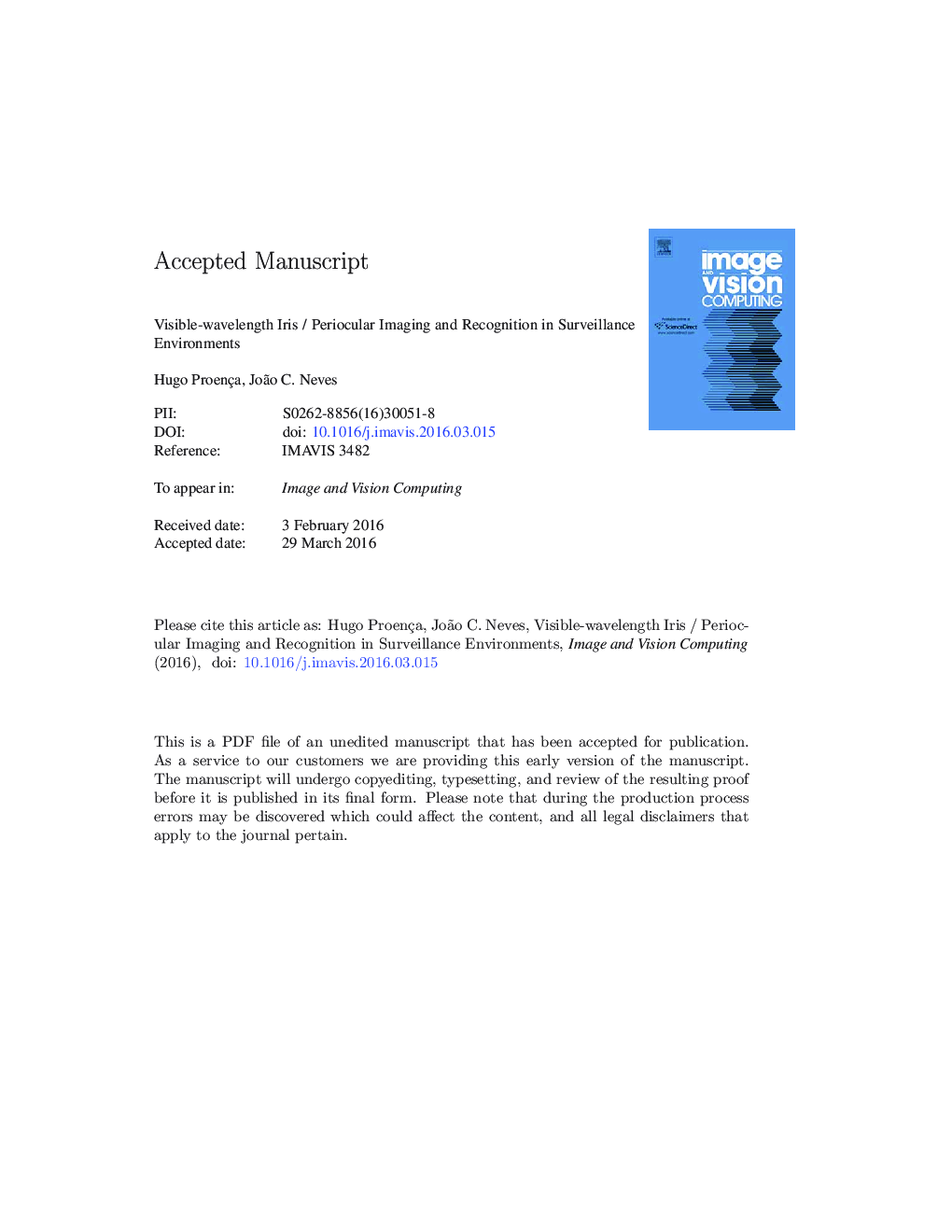| Article ID | Journal | Published Year | Pages | File Type |
|---|---|---|---|---|
| 4969066 | Image and Vision Computing | 2016 | 6 Pages |
Abstract
Visual surveillance cameras have been massively deployed in public urban environments over the recent years, as a crime prevention and law enforcement solution. This fact raised the interest in developing automata to infer useful information from such crowded scenes (from abnormal behavior detection to human identification). In order to cover wide outdoor areas, one interesting possibility is to combine wide-angle and pan-tilt-zoom (PTZ) cameras in a master-slave configuration. The use of fish-eye lenses allows the master camera to maximize the coverage area while the PTZ acts as a foveal sensor, providing high-resolution images of the interest regions. This paper addresses the feasibility of using this type of data acquisition paradigm for imaging iris/periocular data with enough discriminating power to be used for biometric recognition purposes.
Keywords
Related Topics
Physical Sciences and Engineering
Computer Science
Computer Vision and Pattern Recognition
Authors
Hugo Proença, João C. Neves,
